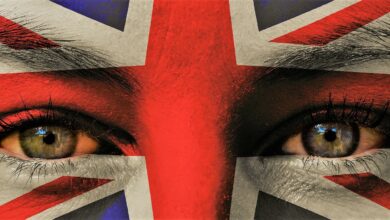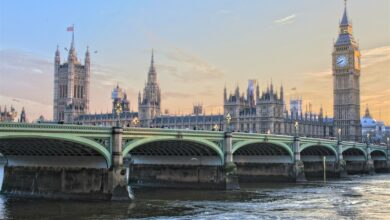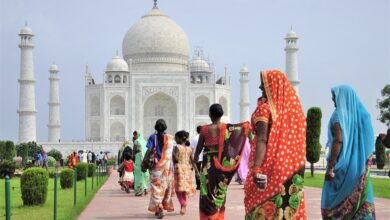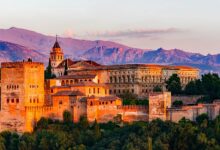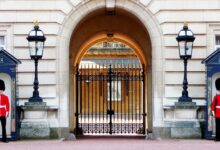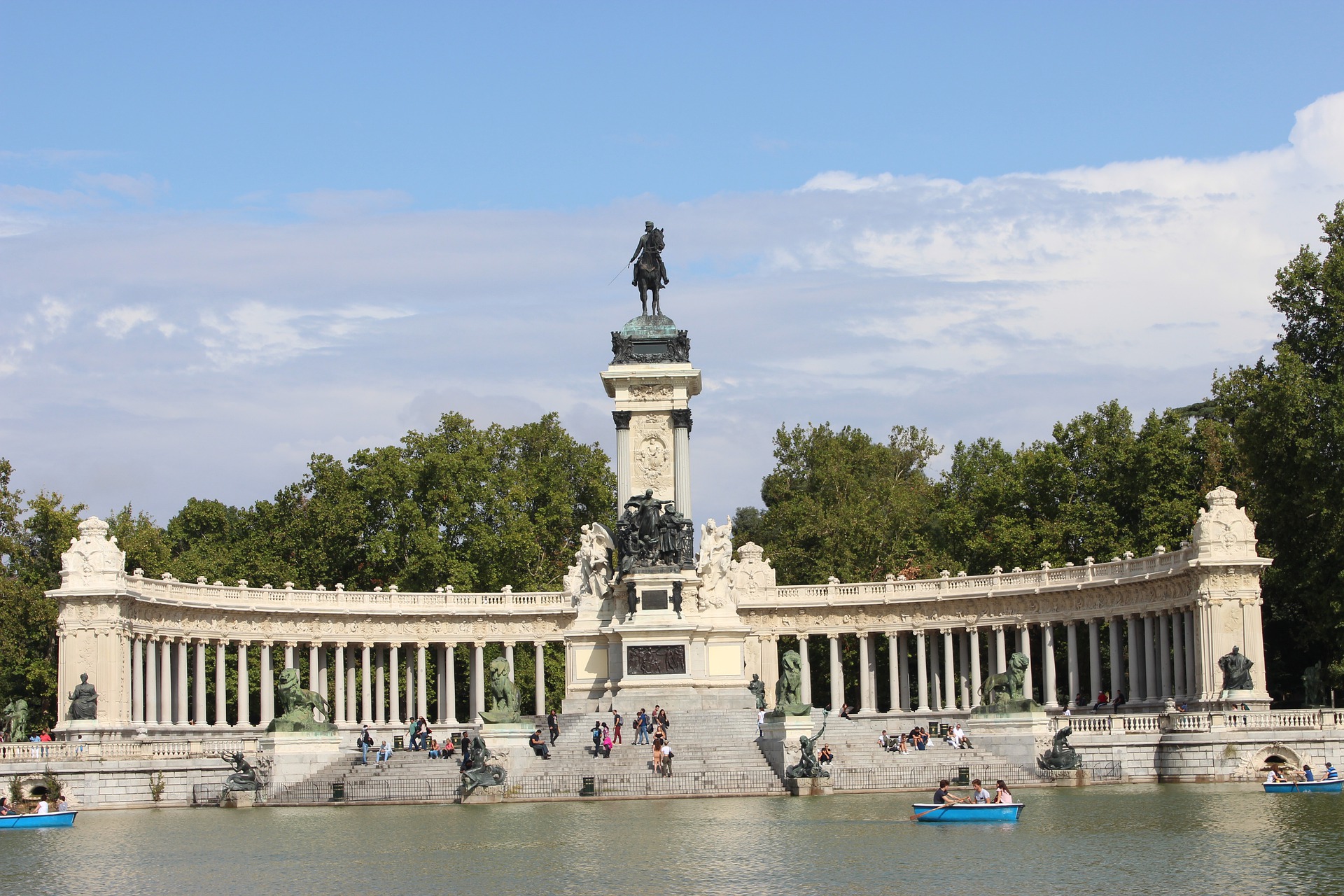
Your Guide To Madrid & The Best Things to See & Do
Your Guide To Madrid & The Best Things to See & Do
Have you ever wondered why one of the famous soccer teams from Madrid is “real”? There is much about Madrid that is “real”, which is part of what makes it such a wonderful destination for anybody interested in Spanish history, culture, or cuisine.
I’ve written this guide to help prepare you for a visit to this truly fascinating, global city. You’ll find tips on how to get there, what to see, where to stay, what to eat, and what to do. I know you’ll have a fantastic time in this city at the very center of Spain.
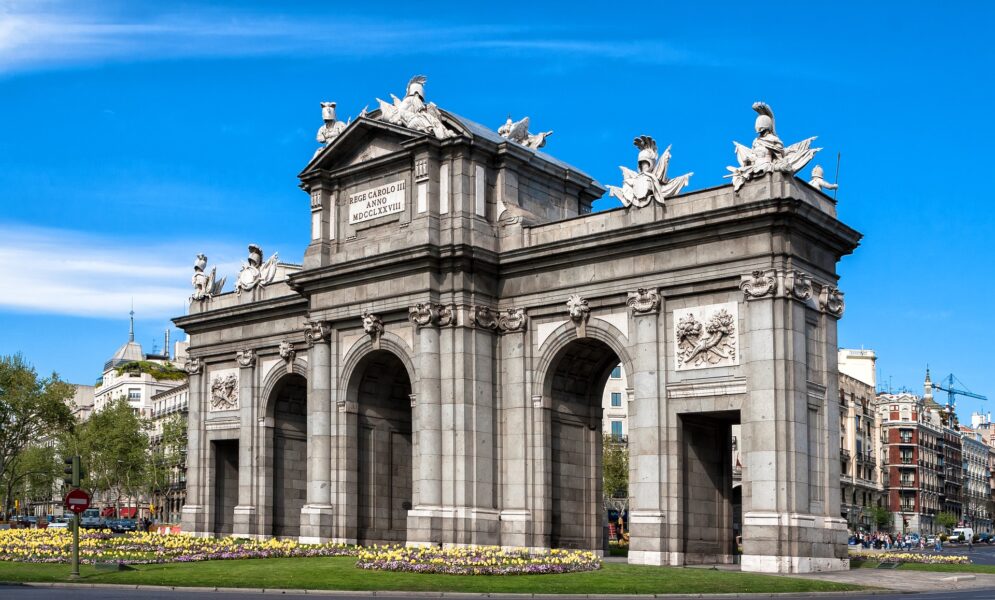
The History of Madrid
Origins
Sometime between 860 and 880, the Moorish ruler Muhammad I of Cordoba built a small castle near the Manzanares River. The Moors called the river al-Majrit (water source), and the castle and citadel that appeared around it over time took on that same name. During the Reconquista, Alfonso VI captured al-Majrit citadel in 1085. In Spanish writing, the “al” was dropped from al-Majrit, and over time the pronunciation and spelling transformed into Madrid.
During the early years of the Spanish Empire, Madrid remained a small and provincial city of between 4 and 5 thousand people. However, in 1561 Philip II moved his court from the ancient and beautiful city of Seville to the small citadel of Madrid. Because the court was the government of the Spanish Empire, Madrid became the de facto capital of Spain.
The Capital
Within 40 years, the population of Madrid exploded from 5 to 30 thousand. Many of Spain’s top writers and artists flocked to the new capital to ply their arts. Philip II and his son and grandson significantly expanded the original Moorish castle of Madrid, which became the royal palace now known as Palacio Real de Madrid. Sadly, the original palace was destroyed in a fire in 1734, and the current palace is its replacement in the same location completed in 1764.
Between 1716 and 1788, Charles III did much to shape the city that we see today. He cleaned up both the city and the government, earning popular approval from the people who would say, “The best mayor, the King.” Under his rule, many of the grand buildings of Madrid were built, including the Puerto de Alcala and the Prado which now houses the Prado National Art Museum.
The Fight for Independence
During the Napoleonic Wars, Napoleon tricked Spain and was able to capture all its forts and take over its government while pretending to be an ally. On 2nd May 1808 (Dos de Mayo in Spanish) the people of Madrid revolted against the occupying French garrison and were suppressed with extreme brutality.
This suppression galvanized Spanish people across the nation to form guerrilla forces to resist French occupation, thus beginning the Spanish War of Independence. The brief battle in Madrid left important physical marks on the capital, including the Plaza del Dos de Mayo and the renaming of the district surrounding this plaza to Malasaña in memory of a teenage girl murdered by French troops in the aftermath of the revolt. There is also a Malasaña Street and a Malasaña Metro Station in Mostoles.
Expansion
Madrid changed much between 1833 and 1868 during the reign of Isabella II. Her government instigated reforms that allowed the city to expand beyond the ancient Moorish walls in a planned Ensanche de Madrid (expansion of Madrid). Church property was confiscated by the state. Church buildings were demolished leading to the widening of squares and several streets. During this period, the population of Madrid doubled, and the room was created for the later population explosion from around 300 thousand in 1868 to over 3 million in 1975.
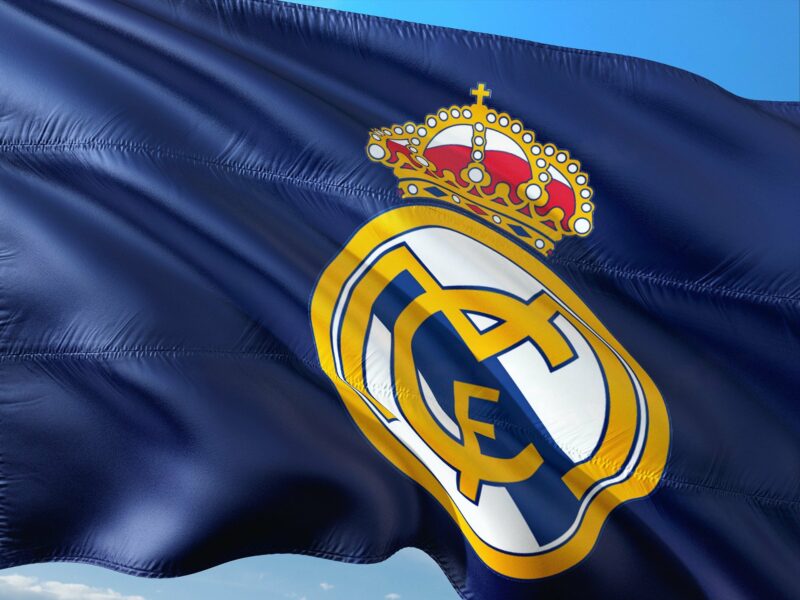
A Fact File of Madrid:
- Location: At the very center of Spain and the Iberian Peninsula, southwest Europe.
- State: Community of Madrid.
- Population: 6,345,000.
- Area: 233 square miles.
- Climate: Inland Mediterranean climate with hot summers with frequent heatwaves but cool winters due to its high altitude.
- Official language: Spanish.
- Other languages: As a global city, Madrid has attracted immigrants from all over the world. So, you’ll hear lots of languages spoken around the center. However, the vast majority (89.8%) are Spanish citizens and speak Spanish and many of the immigrants come from old Spanish colonies where their language is Spanish.
- Religion: 66.5% Catholic, 12.8% atheist, 11.1% agnostic, 9.6% other.
- Time zone: Central European Time, which is UTC+1.
- Soccer teams: Madrid has two popular football teams: Real Madrid and Atletico Madrid. Only Real Madrid has the royal crown on their flag because they are “real” (royal) by appointment to King Alfonso XIII in 1920.
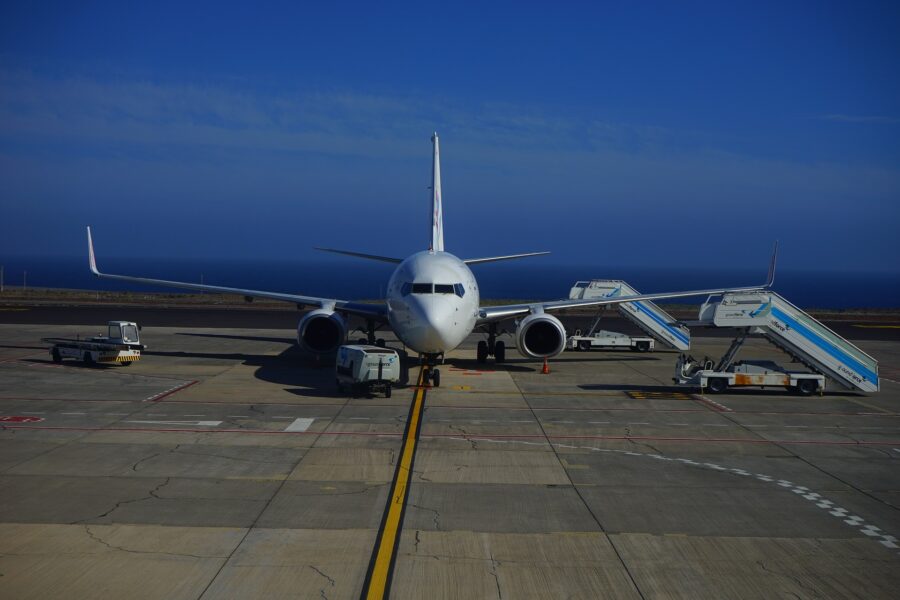
Airports & Entry
It’s possible to reach Madrid by air or rail, but it usually works out much quicker and cheaper to fly.
Flying
Madrid-Barajas is the busiest airport in Spain, and you can often get bargain flights from other countries. For example, flying from Lisbon to Madrid on 15th January 2020 would cost $33 on a 1 hour 20 minutes flight, and flying from Paris to Madrid would cost $28 on a 2 hours 5 minutes RyanAir flight.
However, if you’re flying from a long way away and want to get a real bargain flight, check out flights to London and Paris, too. For example, if you’re flying from NYC, you can get flights to London for $157 and Paris for $166. Compare that to a flight from NYC direct to Madrid which will cost you around $289.
Those flights are cheaper because London and Paris are major transportation hubs for Europe and so there’s more competition between airlines. You can fly from London to Madrid for as little as $18 on a bargain flight, so organizing your own flight transfer in London could work out saving you money. But that’s only good for you if you’ve got the time to mess around changing in London or Paris and don’t mind the extra hassle.
Always use flight comparison websites like Omio to ensure you get the best price on your flight. Booking at least a month in advance is also a great idea to pick up the cheapest flights. Sometimes you can get great last-minute deals, but they aren’t guaranteed, and you could end up spending much more. Buying your flight and accommodation early also ensures you don’t miss out on the time you want to go and the room you want to stay in.
Train or bus
Renfe operates high-speed trains from neighboring countries to Madrid, but they take longer than flights and often cost the same or more than flights. For example, using the above date for comparison, a 10 hour 15 minutes train from Lisbon costs $30 but a 9 hour 41 minute train from Paris costs $197! Flying from Paris would save you $169 compared with taking the train.
There are also long-distance buses from France and Portugal that reach Madrid, but I wouldn’t advise you to take them. Not only are they less comfortable than trains, but they also take longer and often cost more than trains. For example, the journey from Lisbon would be $53 on a Eurolines coach.
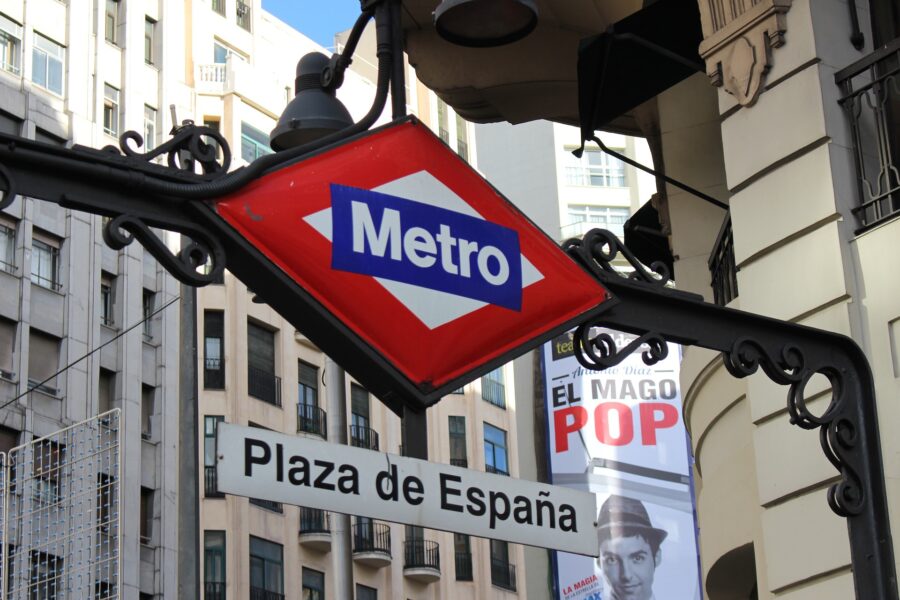
Getting Around in Madrid
The best way to explore the beautiful streets and attractions of Madrid is on foot. However, you should use the cheap and efficient public transport system to move from one neighborhood to the next unless you have a lot of time on your hands.
Tourist Card
If you’re planning to explore Madrid on public transport, it’s a good idea to buy a Tourist Card from any Metro Station or at the airport when you arrive. This card provides unlimited use of Madrid’s Metro and public buses within a particular zone and time period.
This card can be purchased for Zone A or Zones A & T for a specified number of days from 1 to 7. The time elapse begins the first time you use the card. The card’s price depends upon the zones, the number of days, and the age of the tourist.
For example, a Tourist Card that covers the main attractions in Zone A for a period of 7 days costs €35.40 ($38.97). Children under 11 get the card for half price.
Metro
The Metro system is extensive and affordable. It operates from 6 am to 2 am daily. However, it gets really crowded and uncomfortable during the morning and evening rush hours.
The cheapest Metro ticket is €1.50 ($1.65) for 5 stations, and the price increases by €0.10 per station. However, if you’re going to use the Metro several times a day for longer distances than 5 stops, you’re better off buying a Tourist Card. A Zone A, 1-day card costs €8.40 ($9.24).
Bus
The buses are slower than the Metro, but you get to see more of the city during your journey. Plus, there are many more bus stops than Metro stations. If you’re using a Tourist Card, you can choose to take the Metro over long distances but use the bus if you’re only going a short way to somewhere with no convenient Metro station.
Like many historic cities in Europe, Madrid has a popular hop-on hop-off, sightseeing tour bus called the Madrid City Tour. Commentary is available via headphones, and the two Madrid City Tour loops run approximately four times an hour and cover the main attractions. However, this is not part of the public transport system, so it’s not included on your Tourist Card. The online cost for a 1-day ticket is €19.80 ($21.79) or €23.40 ($25.75). Children under 16 get a reduced rate and children under 7 go for free!
Taxis
The taxis in Madrid are white with a red diagonal stripe. At the railway station, bus stations, and airport they can only pick you up from the taxi rank. Elsewhere, you can hail them. Available taxis display a “LIBRE” sign and a green light.
Note that taxi meters start at €2.10 ($2.31) before you start moving and there are surcharges to several key locations, such as the airport (€5.50-$6.05) and the bullring. There’s also a €1.20 ($1.32) surcharge for Sundays and public holidays. After that, it’s €1.00 ($1.10) per kilometer. You can estimate the fare before you travel on an online taxi fare calculator.
Clearly, taxis cost a lot more than the Metro. They’re also slower, especially during rush hour. But they will take you from door to door.
Car
Don’t drive in Madrid. The local drivers are infamous for their aggressive driving techniques. Plus, there’s no point since you can get anywhere quicker on the Metro and you don’t need to park a bus.
If you need a car for excursions outside of Madrid, you can hire them from the train stations or the airport from where it’s easy to reach highways out of the city. You will require an International Drivers Permit to hire a car in Madrid.
Electric bicycle
You can hire electric bicycles from one of the 165 docking stations of the BiciMAD Electric bike-share system. There are over 2,000 bikes in the scheme. It’s a fantastic and healthy way to explore the central areas of the city. You simply register at one of the docking stations and you’ll be issued with a 1, 3, or 5 days card to use with the bikes. You’ll be billed for usage at the end of the period. There are also similar schemes in Madrid for e-scooter hire, like Wind and Lime.
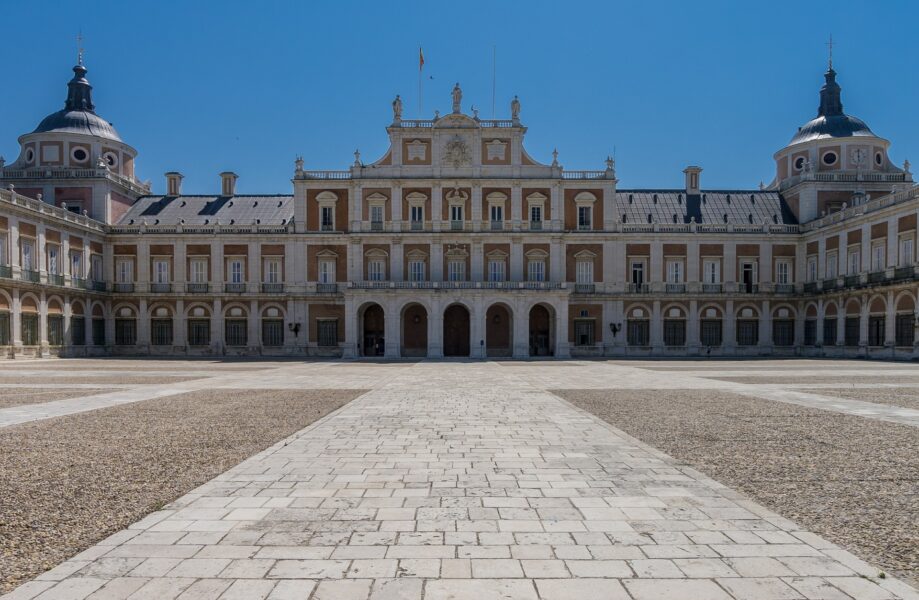
The Top 5 Things to Do & See in Madrid
The Palacio Real de Madrid
This fantastic royal palace in the heart of the old city stands on the site of the ancient Moorish fortress that gave its name to the city. The Palacio Real de Madrid is the official residence of the royal family in Madrid, though they actually only use it for certain state functions. The palace contains 3,000 rooms, including the Royal Apothecary, the Royal Chapel, and the Throne Room.
The Prado National Art Museum
This is Spain’s most important art museum housed in an amazing 18th-century neo-classical palace with controversial modern extensions, like a cube-shaped building. Inside the Prado National Art Museum, you’ll find famous works of art, including paintings by Bosch, El Greco, Goya, and Velazquez.
The Prado is located on El Paseo del Arte (Boulevard of the Arts) where you can also find the CaixaForum, the Reina Sofia National Art Museum, and the Thyssen-Bornemisza Museum. This street probably contains the highest concentration of priceless works of art in the world.
Plaza Mayor
This square in the heart of Madrid’s historic district was once home to the main market in the city. Now it’s an impressive public plaza filled with statues and monuments, like the Arco de Cuchilleros entrance to the square and an equestrian statue of Philip III.
The plaza has played an important part in the city’s history. Here saints were canonized, heretics were burned, and new kings were proclaimed. The many cafés surrounding the square make this a key meeting place for the decision-makers in Spain’s capital city.
Puerta de Alcala
This gateway into the old city of Madrid was built in 1778 and resembles the triumphal arches once built by the Romans. At night, its engravings, columns, and statues look stunning under the effective illumination. It’s located on a roundabout in the Plaza de la Independencia.
The Temple of Debod
This is an astonishing monument near the Plaza de España. It is actually an ancient Egyptian temple transported stone-by-stone to Madrid in 1968 as a gift from Egypt. The temple was dedicated to the gods Amon and Isis in the 2nd century BCE by King Adikhalamani. Inside you’ll find well-preserved shrines and a hallway. A peaceful garden has been planted around the temple to create a magical ambiance in keeping with its antiquity and original purpose.

The Nightlife in Madrid
As both a large capital city and a university city, Madrid has a large and vibrant nightlife scene. Whether you’re looking for something quiet and relaxing, something distinctly Spanish, or something modern and international, you can find it in Madrid.
Relaxing
For a live piano bar, check out the Cuevas de Sesamo, which has been a prime music venue in Madrid since the ‘50s. And if you want to eat while listening to live music, there’s the Amargo Restaurant.
Spanish
You may have come across a few quirky Spanish pop songs over the years. My favorite is The Ketchup Song by Las Ketchup, though a friend of mine really loved Loca People by Sak Noel. If you want to get into the Spanish groove and meet locals, there are various clubs across Madrid where they play this kind of music, like Samsara or La Cartuja.
And though it’s not actually Spanish, salsa is popular in Madrid. You can enjoy salsa music and maybe enjoy a dance or two at El Son or Azucar.
International
If you’re looking for something more international, you can hear hip-hop and RnB in several clubs across the city, such as Bogui Jazz and Serrano 41. For live rock, metal, and indie bands, check out Tupperware and Independence Club. And after 1 am, the electric dance clubs get busy. Penelope Madrid is known for house music on the weekends, and Kapital is one of the most popular clubs in Madrid.
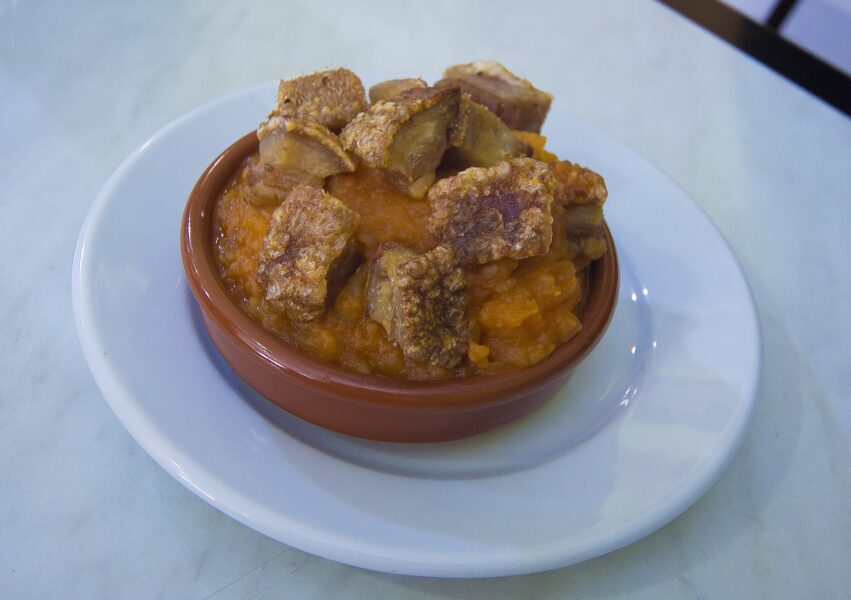
Food in Madrid
Madrid is located in the central region of Spain where traditionally hearty stews and lots of preserved meat and fish appear on the menu, such as jamon Iberico dry-cured ham. But because it is the capital, you can find a wider range of dishes from all across the country in Madrid’s 8,000+ restaurants.
Restaurants
Tapas restaurants, cafés, and bars are common everywhere. The definition of what tapas means changes between food outlets. Essentially, they are small portion sizes that may be appetizers served alongside alcohol or samplers allowing you to taste a wide variety of traditional dishes in one sitting. Certainly, you should sample as wide a range of Spanish cuisine as you can while visiting Madrid.
And one place you might like to sample traditional local food is El Sobrino de Botín, which was established in 1725 and claims to be the oldest restaurant in the world. Their most popular dish is roast suckling pig, which Spanish tourists all want to taste. Earnest Hemmingway used to eat there all the time during before the Civil War.
Cocido Madrileño
If you decide on a set menu in a Madrid restaurant, a traditional stew you’re likely to be served is cocido Madrileño (Madrid stew). This features chickpeas in a rich broth created from many different ingredients, including potatoes, chorizo sausages, blood sausages, chicken, beef, and pork.
Strangely, the traditional way to eat cocido Madrileño is by separating out the parts. First, the actual stock of the cocido is poured from the pot into a dish and eaten with noodles. Second, the chickpeas and vegetables are taken from the pot and served. Last, the remaining meat is eaten by itself. La Bola Taberna is renowned for cocido Madrileño presented in the traditional manner.
Other traditional dishes
Fried pig’s ear is a popular dish in Madrid. Although it sounds strange, apparently oreja a la plancha can be as flavorsome as bacon if correctly cooked. But many dishes feature preserved fish or meats. For example, soldadito de Bacalao is a fried salted cod fritter and boquerones en vinagre are pickled anchovies. A great place to try oreja a la plancha and other traditional dishes is Casa Toni on Calle de la Cruz Street.
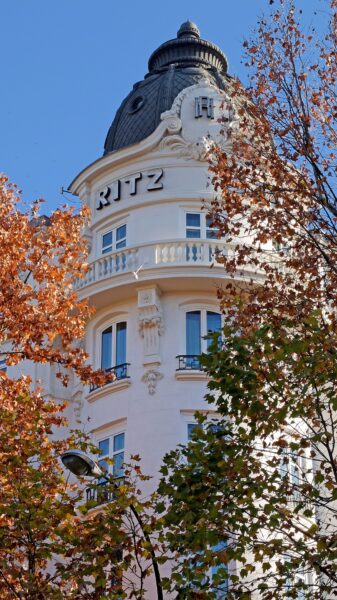
Finding Accommodation in Madrid
Madrid is made up of 21 districts, each with its own distinct character. However, with the city’s efficient public transport system, you can stay anywhere in the city and still take in all its many attractions.
The center
The central area of Madrid is great for people who want to be within easy reach of all the major attractions. Traditionally, the Puerta del Sol square marks Spain’s center. Luxury hotels line the main avenues of the center, but the side streets are awash with hostels and guest apartments.
You can find great budget options, such as Hostal Abami, Madrid Suites San Mateo, and Mad4You Hostel. But you can also find some wonderful, family-friendly hotels, such as the Pestana Plaza Mayor Madrid, NH Collection Madrid Gran Via, and Eurostars Madrid Gran Via.
La Latina
If you’re interested in history, this is the oldest neighborhood, where you’ll find ancient churches and sunny plazas. Many historic buildings have been refurbished to create holiday lettings or boutique hotels. The Posada del Dragon Hotel is a great example and sits over a popular tapas bar.
Malasaña
Just north of the center is Malasaña where you’ll find some of the best nightlife in the city. The area provides a broad range of accommodations, from hostels to boutique hotels. The Hostel CC Malasaña is a superb budget option.
Chueca
This is another great area for nightlife and the place where you’ll find the best LBGT bars and clubs. There are also lots of exclusive restaurants and designer clothes shops in this area. You’ll find the Only You Boutique Hotel on Calle Barquillo.

Visiting Madrid Safely
Spain is considered to be a relatively safe country. However, Madrid suffered from terrorist bombings in 2000, 2004, and 2006. 193 people died and 2,050 were injured in the 2000 bombing on trains around the city carried out by Al-Qaeda. The other bombings were by ETA, the Basque separatist organization. All were carried out in public transport related locations. So, stay aware.
If you see any unattended packages or bags in the city, especially on public transport, distance yourself from the item and alert public transport officials or call the police on 112. When traveling, don’t plug in earphones and reduce your situational awareness.
Petty theft
In tourist hotspots and on public transport, watch out for pickpockets and bag snatchers. At night, avoid deserted streets and parks. Go places in groups rather than on your own.
When going out, keep your money in the front pocket of your jeans or in a money belt. Using an ATM or paying with a card, cover your hand to avoid giving away your PIN code.
Personal Safety
If you decide to enjoy Madrid’s nightlife, tell a relative or friend about where you’re going and ensure you check in with them on return to your hotel. Be careful of your drink and be wary of people who offer to buy you drinks. When using the restroom, take your bag and don’t leave an unattended drink.
The drivers in Madrid have a reputation for aggressive driving, so be especially careful crossing the road. Where possible, use a marked pedestrian crossing.
Before going to Madrid, check with your government’s foreign affairs department. That would be the Bureau of Consular Affairs in the US. Your government will be able to advise you if there are any specific reasons not to travel or things to avoid in Madrid, e.g. a planned public demonstration against American Foreign Policy.
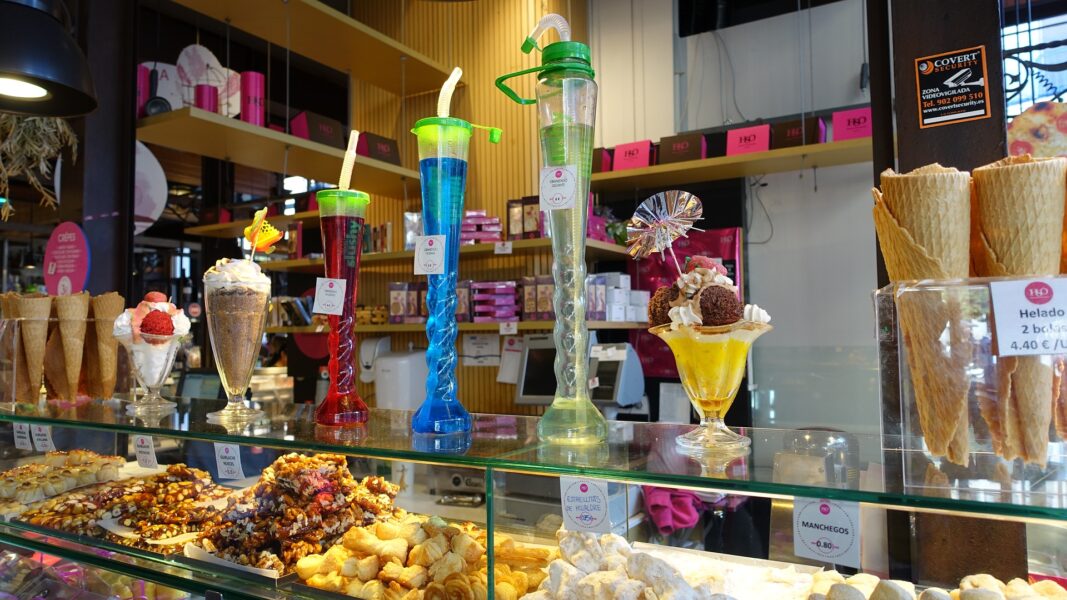
What I Love About Madrid
For me, I think it’s the amazing food that makes Madrid so special. Compare Madrid with New York. Madrid has 8,000+ restaurants while NYC is much larger but only has 10,000 restaurants. Clearly, food is a much more important concern in Madrid.
I love the Spanish approach to food, especially in Madrid, where the best traditional dishes take a long time to prepare, and you’re expected to take a long time to savor them. Yes, I like to eat!
Robert loves nature and history. As a child, he drove his parents crazy on vacation begging to visit museums and castles instead of beaches and theme parks. Now his children send him insane by demanding to visit beaches and theme parks.
He became interested in travel while studying archaeology and anthropology at Cambridge University. He volunteered on archaeological excavations all around the British Isles then enjoyed a year exploring and learning about China.
Today, he loves writing about the places he’s visited and still spends time exploring museums and castles.

